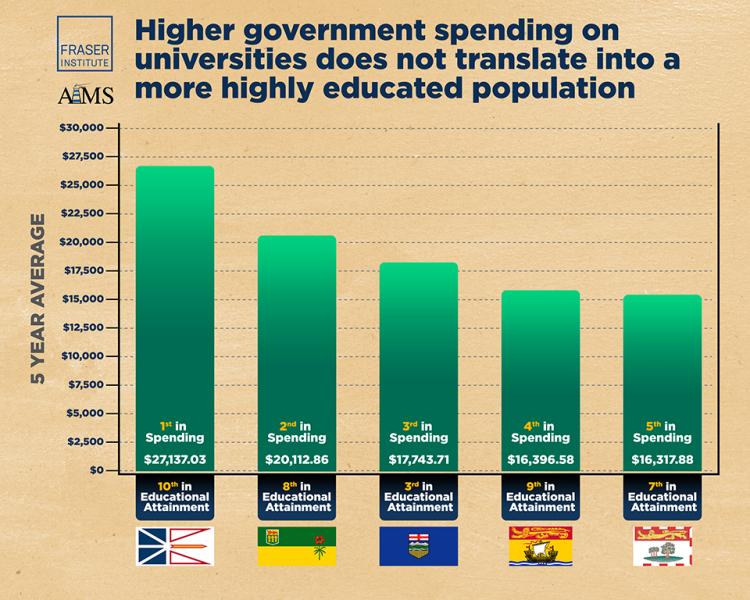Higher university subsidies do not necessarily result in a more educated population, finds a new study released by the Fraser Institute, an independent, non-partisan Canadian public policy think-tank.
"If there was a positive relationship between higher university spending by provincial governments and an increase in educated populations, we would observe the results in places like Newfoundland and Labrador, and Saskatchewan where the most is spent on universities," said Alex Whalen, associate director of Atlantic Canada Prosperity at the Fraser Institute and co-author of Educational Attainment, Migration, and Provincial Spending on Universities in Canada.

In 2021/22 (the latest year if available data) universities across Canada educated over 1.0 million full time and 250,000 part time students at a total cost of more than $46-billion. While this funding comes from a variety of sources, the single largest source is provincial governments.
The study finds that high-spending provinces generally do not record higher levels of educational attainment. For example, Newfoundland & Labrador (1st), Saskatchewan (2nd), New Brunswick (4th), and Prince Edward Island (5th) all ranked in the top half of spending on a per-domestic student basis, while these same provinces rankings remain low in terms of educational attainment (10th, 7th, 8th, and 9th respectively).
Further, the study finds that interprovincial migration seems to be a more important factor, allowing university students educated and paid for in one province to move to another after graduation, effectively transferring the provincial investment with them.
"For any given province, substantial migration to another province represents a financial loss for the province when recent university graduates leave after completing their studies; a situation we're all too familiar with in Atlantic Canada," Whalen said.
More from this study













